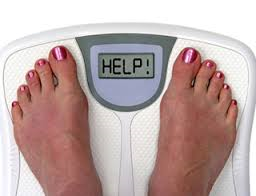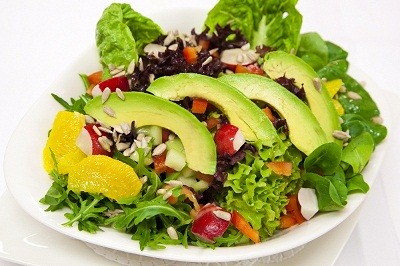Obesity continues to wreak havoc on our children’s health. Here’s a tip to help reduce your child’s risk:
Building Wellness Into The Next Generation
by admin

Obesity continues to wreak havoc on our children’s health. Here’s a tip to help reduce your child’s risk:
by admin
Get Outdoors: Take advantage of the warm (okay hot!) weather and get outdoors. Summer is a great time to harness the sun’s power to improve mood and sense of well-being. Sunlight also is necessary for your body’s production of vitamin D. But also, being outdoors in contact with nature has a number of benefits in itself. The outdoors encourages exercise, stimulates creativity, and produces an appreciation for the abundant variety of the natural environment.
Eat Locally: It’s always a good idea to eat locally, because you’re much more likely to get fresh produce that’s been grown optimally. Local produce is usually on the shelf within 24 hours of picking; it is also usually grown to the peak of ripeness making it much more tasty. Have you ever bitten into a beautiful dark red berry that was tasteless or bitter? It probably came from a distance and was picked before ripeness to prevent spoilage during the long journey. Since produce loses nutrients quickly, the longer it’s off the vine, the less vital it is. Another advantage: local produce is much less likely to be genetically engineered. Eating locally allows you to eat what’s in season which is a great way to enjoy a variety of produce.
Spend More Family Time: The kids are out of school. With a break from the hassles of homework and after-school activities, summer is a great time to spend more time together as a family. Studies have shown that eating meals together as a family is protective against weight problems, and even protective against certain illnesses. But don’t stop at family meals; get in some family walks and games as well.
By the way, here’s an interesting fact: studies are showing that outdoor exposure in a natural environment relieve symptoms of attention deficit. So getting outdoors is more than fun, it’s medicinal.
by admin

 I’ve been asked this question quite a few times. The answer is yes…and no. What I mean is this: a child’s diet is a critical piece in the treatment of ADHD. However, the right diet doesn’t treat just ADHD, but it makes the brain work better in general. So, an ADHD diet is what I prefer to call a brain healthy diet.
I’ve been asked this question quite a few times. The answer is yes…and no. What I mean is this: a child’s diet is a critical piece in the treatment of ADHD. However, the right diet doesn’t treat just ADHD, but it makes the brain work better in general. So, an ADHD diet is what I prefer to call a brain healthy diet.
What happens in ADHD? The brain has difficulty focusing and staying on task; it has difficulty planning and self-regulating. In order for the brain to carry out these tasks, it needs adequate amounts of building materials. The brain is one of the most metabolically active parts of your body, and therefore it needs a constant flow of nutrients to work well. So what makes up an ADHD diet?
Protein: Many children today eat a diet that’s heavy in simple carbohydrates and low in protein. A brain healthy diet needs a good supply of healthy proteins. Even though lean meat and eggs are good sources of protein, make sure you remember plant sources. For example, beans, nut butters, certain vegetables, such as broccoli, and certain whole grains such as quinoa, are healthy sources of protein.
Complex carbohydrates are essential for brain health because they provide steady energy to keep up with the brain’s high metabolism rate. A variety of fruits and vegetables, as well as beans and whole grains, provide this energy source.
Healthy fats are finally being recognized for their critical role in brain function. Almonds, walnuts, avocados and flax seeds are important sources of fat for your child’s diet. Also, wild salmon once or twice per week provides essential fatty acids. If you use oil when cooking, the best choices for brain health are coconut and extra virgin olive oil.
Micronutrients: There are so many vitamins and minerals that are needed for a brain healthy diet. Zinc, chromium, iron, vitamin A, folate, vitamin C…just to name a few! That’s why variety is so critical to a healthy brain, because these nutrients are variably abundant in different foods.
A brain healthy diet will help to improve your child’s attention, mood and energy level. So, using an ‘ADHD diet’ as a key part of the overall treatment plan for your child’s symptoms is a smart idea.
by admin
Are some of your food choices damaging your body? Find out http://info.nihadc.com/integrative-health-blog/bid/71527/5-Toxic-Food-Choices-and-Simple-Ways-to-Trade-Up
by admin

Some foods are simply superstars when it comes to nutrients: watermelon for example.
The Center for Science in the Public Interest lists watermelon as one of the top ten best foods to eat. Since summer’s almost over, take advantage of these last few weeks to enjoy watermelon while it’s in season. Watermelon is high in vitamin A and vitamin C. It’s also a good source of potassium, which is sorely lacking in the American diet today (Americans are eating only about ½ the recommended amount of potassium daily). Finally, it’s a great source of lycopene, a carotenoid which has anti-oxidant, cancer fighting properties.
by admin
On the front page of the December issue of the Pediatric News journal was the new recommendation to test all 9 to 11 year olds for cholesterol level. According to this article, “…heart attacks, strokes, and other cardiovascular problems in adulthood are often the end result of cardiovascular risk factors that went unrecognized throughout childhood…”1
I’m glad to see that we, as pediatricians, are acknowledging the fact that heart disease, like many other diseases, really starts in childhood. And while I fully support the screening process, I’m much more interested in prevention. What should we do during that first decade of our children’s lives to make the screening unnecessary? It’s all about diet and lifestyle.
For the past thirty years, child health has been going in the wrong direction. Childhood overweight and obesity has skyrocketed during the past 3 decades. And that trend is directly linked to the increased incidence of a variety of heart related disorders in children, most notably high blood pressure, metabolic syndrome, and high cholesterol levels. This is a very serious problem, given that epidemiologists are proposing that life expectancy for this rising generation of children could be shortened by as much as eight years. So, what are the primary factors leading to these disturbing trends?
We need to make some fundamental changes in the way we feed our children. Don’t believe the myth that children don’t need to worry about what they eat until they grow older. We have known for years that the roots of heart disease begin in childhood. And remember, the habits they develop in childhood will persist into adulthood, so we want to instill the right habits now. Here’s what we can do:
Reference:
1) Splete, H. Test Cholesterol in all 9- to 11-year olds. Pediatric News. December 2011, Vol 45, No. 12.